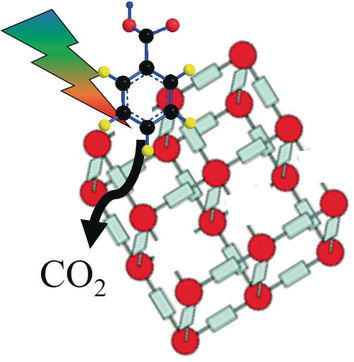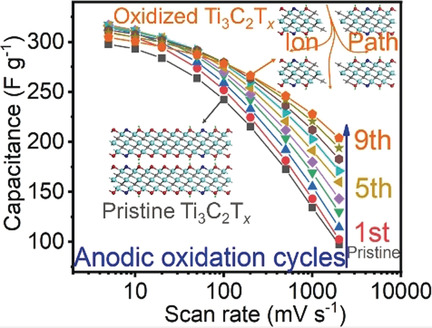Journal list menu
Export Citations
Download PDFs
Cover Pictures
Cover Picture: Li-N2 Batteries: A Reversible Energy Storage System? (Angew. Chem. Int. Ed. 49/2019)
- Page: 17483
- First Published: 08 November 2019
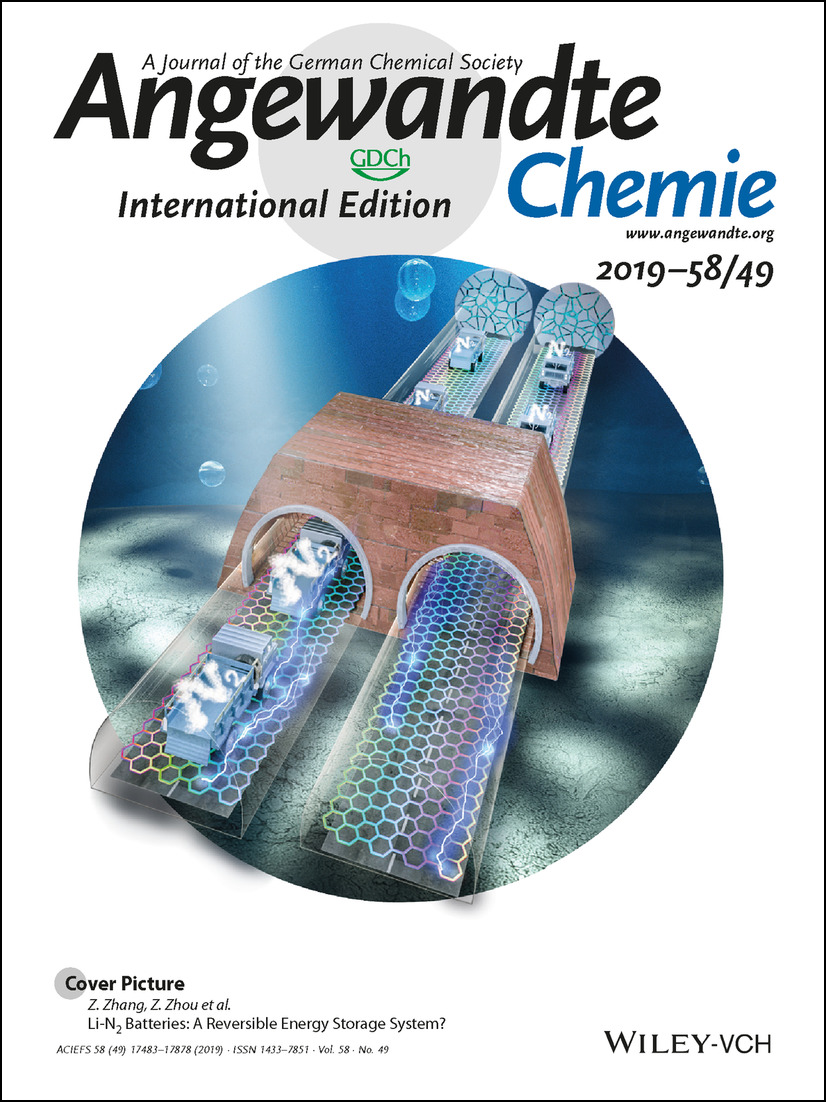
Graphene was introduced into Li–N2 batteries to investigate the cycling stability, as described by Z. Zhang, Z. Zhou, and co-workers in their Research Article on page 17782 ff. The low efficiency and irreversibility of Li-N2 batteries are due to the instability and hygroscopicity of the discharge product Li3N. Moreover, modification by Li3N and LiOH generated in situ reduces the loss and volume change of Li anodes during stripping and plating, thereby promoting the rechargeability of Li-N2 batteries.
Inside Cover: Structural Evolution of Water on ZnO(10 0): From Isolated Monomers via Anisotropic H-Bonded 2D and 3D Structures to Isotropic Multilayers (Angew. Chem. Int. Ed. 49/2019)
0): From Isolated Monomers via Anisotropic H-Bonded 2D and 3D Structures to Isotropic Multilayers (Angew. Chem. Int. Ed. 49/2019)
- Page: 17484
- First Published: 08 November 2019

An atomic-level picture of the structural evolution of water on the anisotropic ZnO(10 0) surface was investigated by Y. Wang, C. Wöll et al. in their Research Article on page 17751 ff. by combining experiment and theory. IR spectroscopic evidence of isolated, intact D2O monomers is provided. The hydration proceeds further through an autocatalytic dissociation of dimers, followed by the formation of a mixed 2D D2O/OD adlayer and various complex H-bonded 3D structures.
0) surface was investigated by Y. Wang, C. Wöll et al. in their Research Article on page 17751 ff. by combining experiment and theory. IR spectroscopic evidence of isolated, intact D2O monomers is provided. The hydration proceeds further through an autocatalytic dissociation of dimers, followed by the formation of a mixed 2D D2O/OD adlayer and various complex H-bonded 3D structures.
Inside Back Cover: Understanding the pH Dependence of Underpotential Deposited Hydrogen on Platinum (Angew. Chem. Int. Ed. 49/2019)
- Page: 17877
- First Published: 08 November 2019

Surface-enhanced infrared spectra show that interfacial cations interact with the electrode surface by altering the interfacial water structure, rather than the specific adsorption. In their Research Article on page 17718 ff. Y. Yan, B. Xu, and co-workers demonstrate that interfacial water structure engineering could hold the key to improving the kinetics of the hydrogen oxidation and evolution reactions.
Back Cover: A Novel Metastable Pentavalent Plutonium Solid Phase on the Pathway from Aqueous Plutonium(VI) to PuO2 Nanoparticles (Angew. Chem. Int. Ed. 49/2019)
- Page: 17878
- First Published: 08 November 2019

A novel pentavalent plutonium solid phase was observed on the pathway from aqueous PuVI to PuO2 nanoparticles, as reported by K. O. Kvashnina et al. in their Communication on page 17558 ff. This was achieved by combining a high-energy-resolution fluorescence detection method at the Pu M4 and L3 edges with electronic-structure calculations.
Frontispiece
Frontispiece: Total Synthesis of (−)-Perezoperezone through an Intermolecular [5+2] Homodimerization of Hydroxy p-Quinone
- First Published: 25 November 2019
![Frontispiece: Total Synthesis of (−)-Perezoperezone through an Intermolecular [5+2] Homodimerization of Hydroxy p-Quinone Volume 58 Issue 49, 2019](/cms/asset/c510aa37-a0b2-4d65-8da4-a327a29c171f/anie201984961-toc-0001-m.jpg)
Total Synthesis In their Communication on page 17552 ff., J. Deng et al. present the copper-catalyzed [5+2] homodimerization of hydroxy p-quinone to furnish bicyclo[3.2.1]octadienone core structures. Applying this approach enables a concise nine-step total synthesis of (−)-perezoperezone.
Frontispiece: Surface-Electron Coupling for Efficient Hydrogen Evolution
- First Published: 25 November 2019
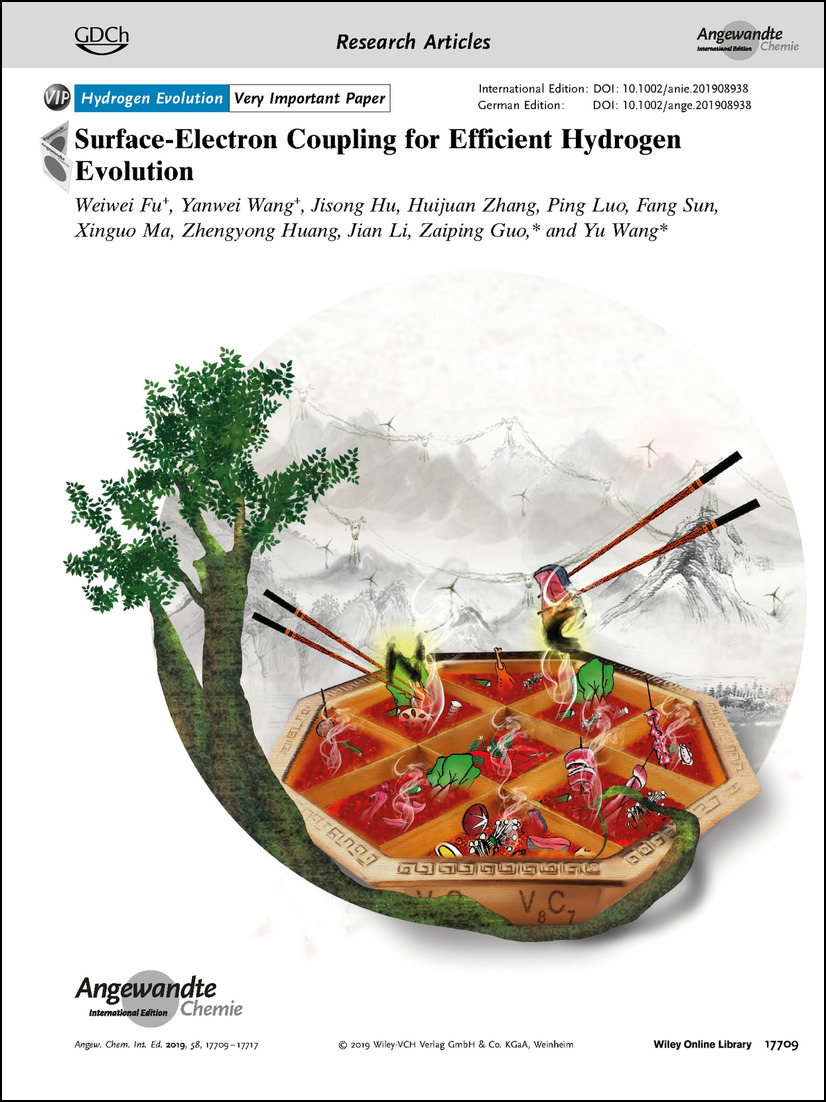
Hydrogen Evolution In their Research Article on page 17709 ff., Z. Guo, Y. Wang et al. report on the controllable modification of graphene/V8C7 heterostructures by nitrogen. The hybrid material displays an exceptional alkaline hydrogen-evolution capability.
Graphical Abstract
Graphical Abstract: Angew. Chem. Int. Ed. 49/2019
- Pages: 17487-17502
- First Published: 25 November 2019
Corrigenda
Corrigendum: Synthesis of Plasmonic Group-4 Nitride Nanocrystals by Solid-State Metathesis
- Page: 17502
- First Published: 25 November 2019
Corrigendum: Access to a Key Building Block for the Prostaglandin Family via Stereocontrolled Organocatalytic Baeyer–Villiger Oxidation
- Page: 17502
- First Published: 25 November 2019
Author Profile
News
New President of the GDCh:P. Schreiner / TCR Lecture: B. ListACES–GDCh Symposium
- Page: 17507
- First Published: 24 October 2019
Highlights
Photoelectrochemical Synthesis
Merging Photocatalysis with Electrochemistry: The Dawn of a new Alliance in Organic Synthesis
- Pages: 17508-17510
- First Published: 23 October 2019
Minireviews
Nanosheet Membranes
2D Nanosheets and Their Composite Membranes for Water, Gas, and Ion Separation
- Pages: 17512-17527
- First Published: 27 February 2019

Modification of nanosheet membranes by crosslinking and functionalization has improved their stability, their separation functionality, and the scalability of membrane production while retaining the membranes’ excellent molecular transport properties. These improvements have enhanced the potential of nanosheet membranes in practical applications such as separation processes.
Reviews
Solar Fuels
From Solar Energy to Fuels: Recent Advances in Light-Driven C1 Chemistry
- Pages: 17528-17551
- First Published: 02 March 2019
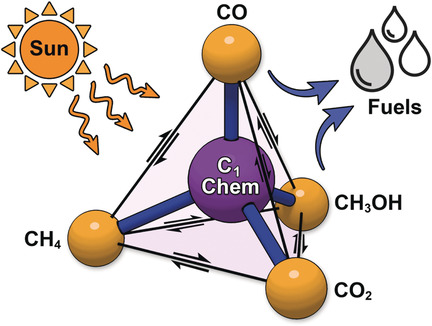
Soaking up the sun: This Review highlights recent achievements in solar-driven C1 chemistry, especially in processes such as solar-driven Fischer–Tropsch synthesis, the water-gas-shift reaction, CO2 hydrogenation, as well as CH4 and CH3OH conversion. Particular emphasis is placed on the rational design of catalysts, structure–reactivity relationships, as well as reaction mechanisms during the solar-driven processes.
Communications
Total Synthesis | Hot Paper
Total Synthesis of (−)-Perezoperezone through an Intermolecular [5+2] Homodimerization of Hydroxy p-Quinone
- Pages: 17552-17557
- First Published: 13 October 2019
![Total Synthesis of (−)-Perezoperezone through an Intermolecular [5+2] Homodimerization of Hydroxy p-Quinone](/cms/asset/e7b6472d-dafd-4c61-ad1c-df7113e9f28f/anie201911978-toc-0001-m.jpg)
In nine steps: The first copper-catalyzed intermolecular [5+2] homodimerization of hydroxy p-quinone is presented, furnishing bicyclo[3.2.1]octadienone core structures in typically good yields and excellent diastereoselectivities. Applying this synthetic approach enables a concise nine-step total synthesis of (−)-perezoperezone from commercially available 3,5-dimethoxytoluene.
Actinide Chemistry | Very Important Paper
A Novel Metastable Pentavalent Plutonium Solid Phase on the Pathway from Aqueous Plutonium(VI) to PuO2 Nanoparticles
- Pages: 17558-17562
- First Published: 17 October 2019
Cancer
Volatile Organic Compound Based Probe for Induced Volatolomics of Cancers
- Pages: 17563-17566
- First Published: 13 September 2019
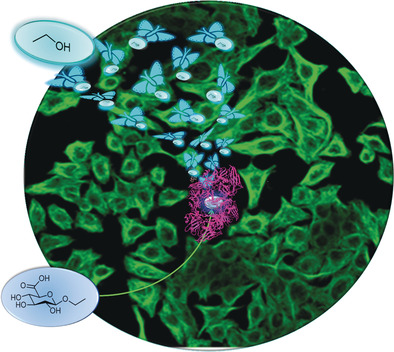
Induced volatolomics: A volatile organic compound (VOC) based probe is selectively converted by tumours into a VOC that diffuses into the blood stream and is then released in exhaled breath. The VOC in the exhaled breath can be detected and used as a diagnostic tool for cancer. This approach was used in the detection of several different tumours in mice, and for monitoring tumour growth and tumour response to chemotherapy.
Hydroboration
Asymmetric Magnesium-Catalyzed Hydroboration by Metal-Ligand Cooperative Catalysis
- Pages: 17567-17571
- First Published: 23 October 2019

Mg-ligand cooperative activation of HBpin: The enantioselective magnesium-catalyzed hydroboration of ketones using a (R)-(+)-BINOL derivative as a chiral ligand affords excellent yields and enantioselectivities. Experimental investigations together with DFT calculations provide insight into the reaction mechanism and the origin of enantioselectivity.
Dioxygen Reduction
Impact of Intramolecular Hydrogen Bonding on the Reactivity of Cupric Superoxide Complexes with O−H and C−H Substrates
- Pages: 17572-17576
- First Published: 30 August 2019

Little helper hydrogen bond: The dioxygen reactivity of a series of TMPA-based copper(I) complexes (TMPA=tris(2-pyridylmethyl)amine) was studied. Kinetic stabilization of the H-bonded [( TMPA)CuII(O2.−)]+ cupric superoxide species was achieved with X1/X2=−NH2 and/or pivalamido (−HNC(O)C(CH3)3). The complexes show high reactivity towards phenolic substrates and substrates possessing moderate C−H bond-dissociation energies.
TMPA)CuII(O2.−)]+ cupric superoxide species was achieved with X1/X2=−NH2 and/or pivalamido (−HNC(O)C(CH3)3). The complexes show high reactivity towards phenolic substrates and substrates possessing moderate C−H bond-dissociation energies.
Polycyclic Aromatic Hydrocarbons
Contorted Polycyclic Aromatic Hydrocarbons with Two Embedded Azulene Units
- Pages: 17577-17582
- First Published: 24 September 2019
Biocatalysis
S-Adenosyl Methionine Cofactor Modifications Enhance the Biocatalytic Repertoire of Small Molecule C-Alkylation
- Pages: 17583-17588
- First Published: 01 October 2019
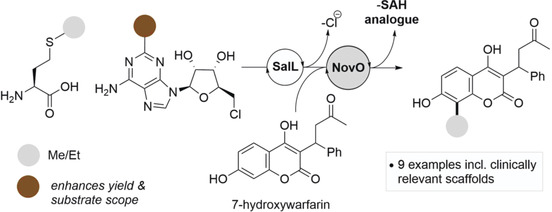
A tandem enzymatic strategy to enhance the scope of C-alkylation of small molecules via coupling the production of S-adenosyl methionine (SAM) cofactor analogues with C-(m)ethyl transfer to coumarin substrates, catalyzed by the methyltransferase (MTase) NovO, is described. This forms C-(m)ethylated coumarins in superior yield and greater substrate scope relative to that obtained using cofactors lacking nucleobase modifications.
Nitride Oxygenation
Conversion of a Fleeting Open-Shell Iron Nitride into an Iron Nitrosyl
- Pages: 17589-17593
- First Published: 18 September 2019
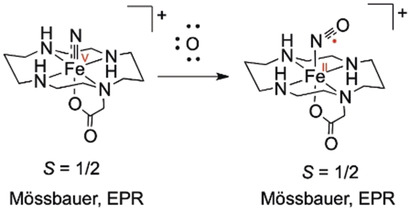
In situ EPR and Mössbauer investigations reveal unprecedented oxygenation of a transient paramagnetic iron(V) nitrido intermediate yielding an iron nitrosyl species. Computational studies suggest that the N−O bond formation involves transfer of a formally closed-shell singlet O atom to the (FeN)2+ core concurrent with synergetic orbital interactions.
Bioanalytics
High-Throughput Bioassays using “Dip-and-Go” Multiplexed Electrospray Mass Spectrometry
- Pages: 17594-17598
- First Published: 07 October 2019
Main-Group Compounds
Crystalline Divinyldiarsene Radical Cations and Dications
- Pages: 17599-17603
- First Published: 25 September 2019

One-by-one electron oxidation of diarsenes [As2] featuring very efficient π-donor N-heterocyclic vinyl substituents with GaCl3 leads to the formation of radical cations [As2]+. and dications [As]2+ as crystalline solids. Experimental and computational studies revealed the delocalization of unpaired electron over the π-conjugated CAs2C framework.
Photoelectrocatalysis
Identifying Copper Vacancies and Their Role in the CuO Based Photocathode for Water Splitting
- Pages: 17604-17609
- First Published: 27 September 2019
Perovskite Solar Cells | Hot Paper
Self-Assembly of Hybrid Oxidant POM@Cu-BTC for Enhanced Efficiency and Long-Term Stability of Perovskite Solar Cells
- Pages: 17610-17615
- First Published: 08 October 2019
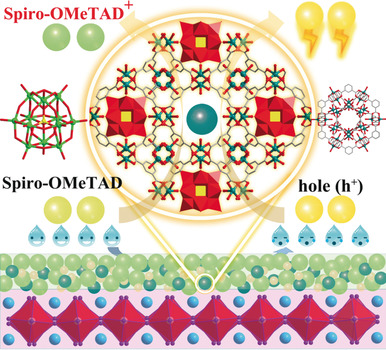
Oxidants will happen: The effective oxidation of spiro-OMeTAD is carried out by a hybrid polyoxometalate@metal–organic framework (POM@MOF) POM@Cu-BTC which can be used as the hole transport material (HTL). This composite oxidant contributes to enhanced efficiency, as well as improved long-time stability of perovskite solar cells (PSCs).
Mass Spectrometry
Ion-Mobility Spectrometry Can Assign Exact Fucosyl Positions in Glycans and Prevent Misinterpretation of Mass-Spectrometry Data After Gas-Phase Rearrangement
- Pages: 17616-17620
- First Published: 23 September 2019
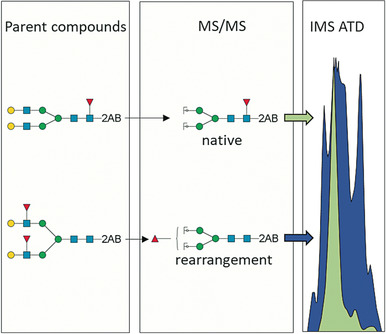
A clear case: The determination of glycan fucosyl positions with MS/MS is complicated due to rearrangements in the gas-phase, leading to erroneous structural assignments. Unique IMS arrival-time distributions of MS/MS fragments can be used to discriminate between fucosides originating from parent compounds and rearranged fucosyl residues, preventing misinterpretation of MS/MS spectra.
Metastable Phases
High Phase-Purity 1T-MoS2 Ultrathin Nanosheets by a Spatially Confined Template
- Pages: 17621-17624
- First Published: 25 September 2019

1T-MoS2 coupled with NiS2 was successfully synthesized in high phase purity by a spatially confined template method on a large scale. A different ratio of 1T-MoS2 could be obtained by simply regulating the structure of the template. The hydrogen evolution reaction (HER) performance of the 1T-MoS2/NiS2 in alkaline media was studied.
Organocatalysis
Atroposelective Arene Formation by Carbene-Catalyzed Formal [4+2] Cycloaddition
- Pages: 17625-17630
- First Published: 25 September 2019
![Atroposelective Arene Formation by Carbene-Catalyzed Formal [4+2] Cycloaddition](/cms/asset/2e84a78c-8533-4227-9908-9a1e6c6e38ef/anie201910049-toc-0001-m.jpg)
Atroposelective [4+2]: A new organocatalyzed atroposelective arene formation reaction involves a carbene-catalyzed formal [4+2] cycloaddition of conjugated enals and α-aryl ketones. This study expands the synthetic potential of N-heterocyclic carbene (NHC) organocatalysis and provides a competitive pathway for the synthesis of axially chiral ligands, catalysts, and other functional molecules.
Perovskite Nanocrystals
Controlled Growth of CH3NH3PbBr3 Perovskite Nanocrystals via a Water–Oil Interfacial Synthesis Method
- Pages: 17631-17635
- First Published: 27 September 2019

Growth on the water: A comprehensive kinetic study of the growth mechanism of MAPbBr3 nanocrystals (NCs; MA=CH3NH3+) is made possible through the water–oil interfacial synthesis method. The overall reaction time of MAPbBr3 NCs is thereby prolonged to tens of minutes by reducing the formation rate of PbBr64− octahedra and the diffusion rate of MA.
Isomerization | Hot Paper
Reversible Transformation between Amorphous and Crystalline States of Unsaturated Polyesters by Cis–Trans Isomerization
- Pages: 17636-17640
- First Published: 08 October 2019

Affairs of state: Aliphatic polyesters prepared from ethylene oxide and maleic anhydride undergo reversible transformation between amorphous and crystalline states through cis–trans isomerization of the C=C bonds in the polymer backbone without any change in either the molecular weight or dispersity of the polymer. A similar transformation was also observed with chiral unsaturated polyesters.
Biosynthesis
15-Hydroperoxy-PGE2: Intermediate in Mammalian and Algal Prostaglandin Biosynthesis
- Pages: 17641-17645
- First Published: 17 September 2019
Radical Reactions
Radical Monofluoroalkylative Alkynylation of Olefins by a Docking–Migration Strategy
- Pages: 17646-17650
- First Published: 30 September 2019
Fluorescence
A Simple Organic Molecule Realizing Simultaneous TADF, RTP, AIE, and Mechanoluminescence: Understanding the Mechanism Behind the Multifunctional Emitter
- Pages: 17651-17655
- First Published: 06 October 2019
Optical Polymers
Infrared Fingerprint Engineering: A Molecular-Design Approach to Long-Wave Infrared Transparency with Polymeric Materials
- Pages: 17656-17660
- First Published: 20 September 2019
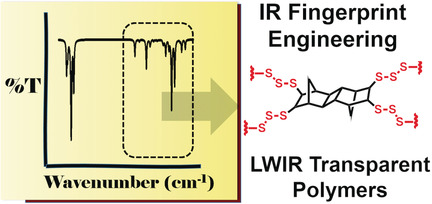
Dancing in the dark: The synthesis of chalcogenide hybrid inorganic/organic polymers with enhanced long-wave infrared (LWIR) transparency is reported. Through the design of organic molecules based on DFT computations and IR-fingerprint engineering, a new class of polymers for LWIR thermal imaging is developed.
Alkylation
Asymmetric Synthesis of Chiral Sulfoximines through the S-Alkylation of Sulfinamides
- Pages: 17661-17665
- First Published: 30 September 2019
Asymmetric Coupling
Rhodium-Catalyzed Enantioselective Oxidative [3+2] Annulation of Arenes and Azabicyclic Olefins through Twofold C−H Activation
- Pages: 17666-17670
- First Published: 24 September 2019
![Rhodium-Catalyzed Enantioselective Oxidative [3+2] Annulation of Arenes and Azabicyclic Olefins through Twofold C−H Activation](/cms/asset/cf522163-e89f-43d7-8d40-71a22c1ce939/anie201911086-toc-0001-m.jpg)
In a rare case of asymmetric twofold C−H activation, rhodium(III)-catalyzed oxidative [3+2] transannulation of two distinct classes of arenes with azabicyclic olefins occurred with high enantioselectivity to give variously substituted heterocyclic products containing two stereocenters (see scheme). The isolation of a chiral RhIII intermediate aided the elucidation of the reaction mechanism.
Gold Nanocages | Very Important Paper
Direct Visualization and Semi-Quantitative Analysis of Payload Loading in the Case of Gold Nanocages
- Pages: 17671-17674
- First Published: 23 September 2019
Birefringent Materials | Very Important Paper
Sn2B5O9Cl: A Material with Large Birefringence Enhancement Activated Prepared via Alkaline-Earth-Metal Substitution by Tin
- Pages: 17675-17678
- First Published: 17 September 2019
COFs
Construction of Covalent-Organic Frameworks (COFs) from Amorphous Covalent Organic Polymers via Linkage Replacement
- Pages: 17679-17683
- First Published: 04 October 2019
Borane Complexes
Stabilization of Classical [B2H5]−: Structure and Bonding of [(Cp*Ta)2(B2H5)(μ-H)L2] (Cp*=η5-C5Me5; L=SCH2S)
- Pages: 17684-17689
- First Published: 25 September 2019
Fullerenes
Concise Synthesis of Open-Cage Fullerenes for Oxygen Delivery
- Pages: 17690-17694
- First Published: 08 October 2019
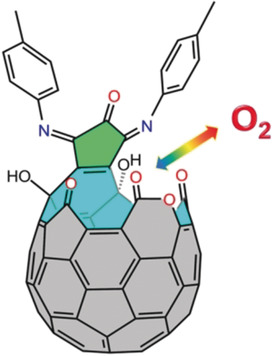
Open-cage fullerenes with a 19-membered orifice were prepared in three steps from C60. Encapsulation of oxygen was achieved at room temperature under moderate pressure (50 atm), and the oxygen could be released slowly under ambient conditions. The activation energy of the oxygen-releasing process is 18.8 kcal mol−1 and the half-life at 37 °C was 73 min, which makes this a potential oxygen-delivery material.
Non-Heme Iron Complexes
The Fe2(NO)2 Diamond Core: A Unique Structural Motif In Non-Heme Iron–NO Chemistry
- Pages: 17695-17699
- First Published: 24 September 2019
C−C Activation
Titanium(III)-Catalyzed Reductive Decyanation of Geminal Dinitriles by a Non-Free-Radical Mechanism
- Pages: 17700-17703
- First Published: 12 September 2019
Electrophilicity
Nucleophilicity of Glutathione: A Link to Michael Acceptor Reactivities
- Pages: 17704-17708
- First Published: 27 September 2019
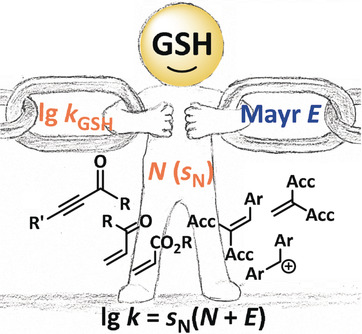
Connected: The nucleophilicity parameters N and sN of glutathione (GSH) were determined in aqueous solution at 20 °C to link published GSH reactivities (lg kGSH) with Mayr's electrophilicity scale (E). The electrophilic reactivities of Michael acceptors determined in kinetic chemoassays can now be compared with reactivities of neutral and cationic electrophiles characterized on the E scale.
Research Articles
Hydrogen Evolution | Very Important Paper
Surface-Electron Coupling for Efficient Hydrogen Evolution
- Pages: 17709-17717
- First Published: 02 September 2019
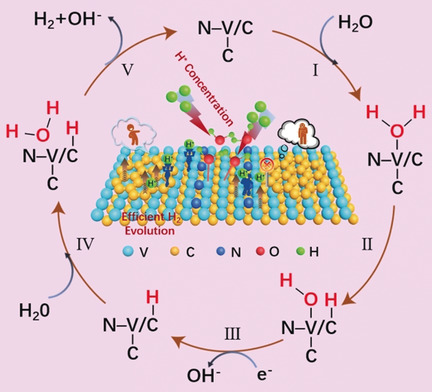
Small modifications have N effect: The controllable modification of graphene/V8C7 heterostructures by nitrogen is reported. Due to changes in the electronic structure of the different parts of the modified heterostructure, it displays an exceptional alkaline hydrogen-evolution capability, the most efficient alkaline hydrogen-evolution catalysis among transition-metal carbides reported thus far.
Electrocatalysis
Understanding the pH Dependence of Underpotential Deposited Hydrogen on Platinum
- Pages: 17718-17723
- First Published: 30 September 2019
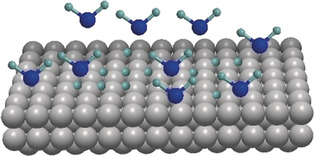
The pH dependent shift in the Hupd peak on Pt surfaces is demonstrated to be driven by the structure of interfacial water rather than the specific adsorption of cations on the electrode surface. The direct water-electrode interaction, which is dependent on the absolute electrode potential, likely holds the key to understanding the pH induced Hupd peak shift on the Pt surface.
Perovskite Solar Cells
Dopant-Free Squaraine-Based Polymeric Hole-Transporting Materials with Comprehensive Passivation Effects for Efficient All-Inorganic Perovskite Solar Cells
- Pages: 17724-17730
- First Published: 27 September 2019
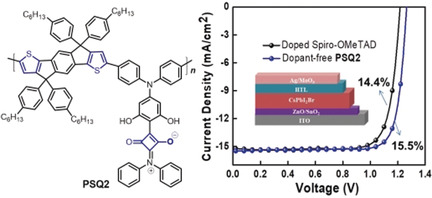
Squaring the hole: Using N,N-diarylanilinosquaraines as the comonomers gives polysquaraine hole-transporting materials (HTMs) that have very high hole mobility. As a dopant-free HTM for α-CsPbI2Br-based all-inorganic perovskite solar cells, the power conversion efficiency (PCE) can reach 15.5 %, among the best for all-inorganic PVSCs.
Homogeneous Catalysis
Highly Robust but Surface-Active: An N-Heterocyclic Carbene-Stabilized Au25 Nanocluster
- Pages: 17731-17735
- First Published: 13 September 2019
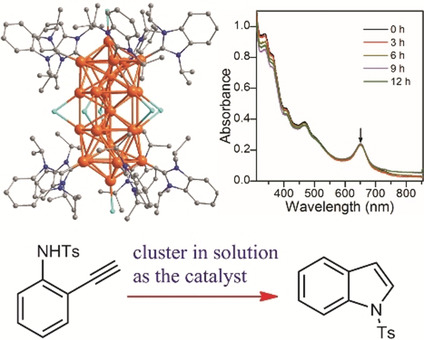
An atomically precise N-heterocyclic carbene-stabilized Au25 nanocluster is successfully synthesized in a one-pot reaction. It exhibits much higher thermal stability in the solution form compared to Au25 protected by thiol or phosphine ligands. The cluster displays excellent catalytic activity in the cycloisomerization of alkynyl amine as a homogeneous catalyst.
Surface Chemistry
Atomic-Scale Visualization of the Stepwise Metal-Mediated Dehalogenative Cycloaddition Reaction Pathways: Competition between Radicals and Organometallic Intermediates
- Pages: 17736-17744
- First Published: 08 October 2019
Radical Chemistry
A Long-Lived Azafullerenyl Radical Stabilized by Supramolecular Shielding with a [10]Cycloparaphenylene
- Pages: 17745-17750
- First Published: 26 September 2019
![A Long-Lived Azafullerenyl Radical Stabilized by Supramolecular Shielding with a [10]Cycloparaphenylene](/cms/asset/3edda973-bf04-4d6d-8a95-7b9bab5991cf/anie201909126-toc-0001-m.jpg)
A radical shielding approach based on supramolecular complexation exploits the protection offered by a [10]cycloparaphenylene ([10]CPP) nanobelt encircling C59N. to stabilize this radical. The EPR signal of C59N.⊂[10]CPP showing characteristic 14N hyperfine splitting was observed even several weeks after its generation.
Surface Chemistry
Structural Evolution of Water on ZnO(10 0): From Isolated Monomers via Anisotropic H-Bonded 2D and 3D Structures to Isotropic Multilayers
0): From Isolated Monomers via Anisotropic H-Bonded 2D and 3D Structures to Isotropic Multilayers
- Pages: 17751-17757
- First Published: 22 October 2019
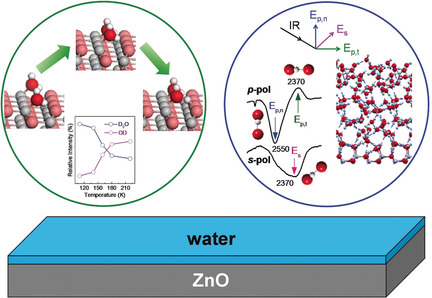
Hydration of ZnO surfaces: Comprehensive results from IRRAS and theory lead to a fundamental understanding of the surface chemistry of water on ZnO(10 0). The hydration is initiated by the formation of intact water monomers and proceeds by an autocatalytic dissociation of dimers and 2D adlayers, finally leading to the formation of various H-bonded 3D structures.
0). The hydration is initiated by the formation of intact water monomers and proceeds by an autocatalytic dissociation of dimers and 2D adlayers, finally leading to the formation of various H-bonded 3D structures.
Systems Chemistry
Response-Retaliation Behavior in Synthetic Protocell Communities
- Pages: 17758-17763
- First Published: 04 October 2019
Nanocrystals | Very Important Paper
Facet-Dependent On-Surface Reactions in the Growth of CdSe Nanoplatelets
- Pages: 17764-17770
- First Published: 08 October 2019

Grow, little platelet: The on-surface reactions of nanoplatelets between the surface Cd sites and activated Se precursors in the solution is found to be strongly facet-dependent. The process occurs in two stages—rapid adsorption onto the non-polar side facets and slow surface reaction on the polar {100} basal facets—as well as one destructive (ripening) stage.
Polymers
Tuning the Reactivity of Cyclopropenes from Living Ring-Opening Metathesis Polymerization (ROMP) to Single-Addition and Alternating ROMP
- Pages: 17771-17776
- First Published: 30 September 2019
Polymerization
Coordinative Chain Transfer Polymerization of Butadiene with Functionalized Aluminum Reagents
- Pages: 17777-17781
- First Published: 30 September 2019
Nitrogen Fixation | Hot Paper
Li-N2 Batteries: A Reversible Energy Storage System?
- Pages: 17782-17787
- First Published: 08 October 2019
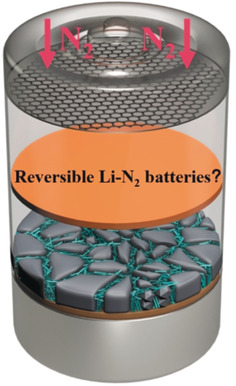
In a fix: Graphene was introduced into Li-N2 batteries to investigate the stability of the reaction cycle. The instability and hygroscopicity of the discharge product Li3N leads to the low efficiency and irreversibility of Li-N2 batteries. Moreover, modification by in situ generated Li3N and LiOH reduces the loss and volume change of Li anodes during stripping and plating, thereby promoting the rechargeability of Li-N2 batteries.
Synthetic Methods
Orthogonal Nanoparticle Catalysis with Organogermanes
- Pages: 17788-17795
- First Published: 27 September 2019

Palladium nanoparticles display orthogonal reactivity to molecular catalysts in the cross-coupling of aryl halides with aryl germanes. While aryl germanes are unreactive under LnPd0/LnPdII catalysis, they display superior reactivity under Pd nanoparticle conditions. Owing to their electron richness, aryl germanes preferentially react by electrophilic aromatic substitution, and in turn are preferentially activated by the more electrophilic nanoparticles.
Fluorescent Probes
A Renal-Clearable Duplex Optical Reporter for Real-Time Imaging of Contrast-Induced Acute Kidney Injury
- Pages: 17796-17804
- First Published: 10 October 2019
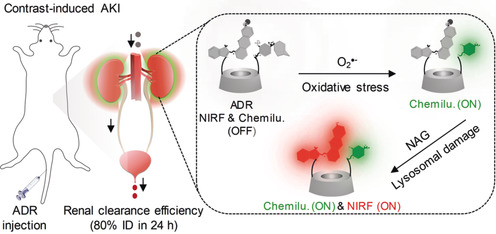
A study in contrast: An optical probe with turn-on chemiluminescence and NIR fluorescence in the presence of superoxide anion (O2.−) and N-acetyl-β-d-glucosaminidase (NAG), respectively, was synthesized. The probe enables real-time in vivo imaging and early detection of contrast-induced acute kidney injury.
Membranes
Synthesis of Gb3 Glycosphingolipids with Labeled Head Groups: Distribution in Phase-Separated Giant Unilamellar Vesicles
- Pages: 17805-17813
- First Published: 17 September 2019

Making the invisible visible: Shiga toxin B subunits (STxB) bind to liquid-ordered (lo) domains in model membranes, implying that its receptor Gb3 is localized in these lo domains. The synthetic access to Gb3 glycosphingolipids with labeled head groups allows quantification of their partitioning in coexisting lo/ld (liquid-disordered) phase giant unilamellar vesicles prior to STxB binding. The data clearly indicate an impact of the fatty acid (un)saturation and α-hydroxylation on the partitioning between phases.
aggregation induced emission
Multiple Anti-Counterfeiting Guarantees from a Simple Tetraphenylethylene Derivative – High-Contrasted and Multi-State Mechanochromism and Photochromism
- Pages: 17814-17819
- First Published: 27 September 2019
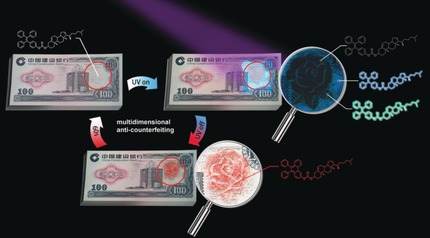
Forgery-proof: A novel AIE molecule 1 is designed with high-contrasted and multi-state mechanochromic and photochromic properties. Based on these properties, 1 shows great potential for application in advanced multidimensional anti-counterfeiting, which was demonstrated by fabrication of a model banknote.
Batteries
A Pyrazine-Based Polymer for Fast-Charge Batteries
- Pages: 17820-17826
- First Published: 30 September 2019
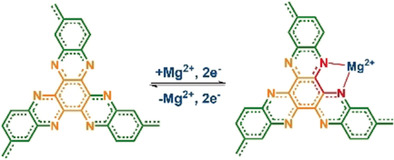
Poly(hexaazatrinaphthalene) (PHATN), an environmentally benign, abundant and sustainable polymer, is employed as a universal cathode material for metal batteries. Exceptional performance is observed in Na and in more challenging Mg and Al batteries. The electron-deficient pyrazine sites in PHATN are the redox centers to reversibly react with metal ions.
Optogenetics
Near-Infrared Optogenetic Genome Engineering Based on Photon-Upconversion Hydrogels
- Pages: 17827-17833
- First Published: 23 September 2019
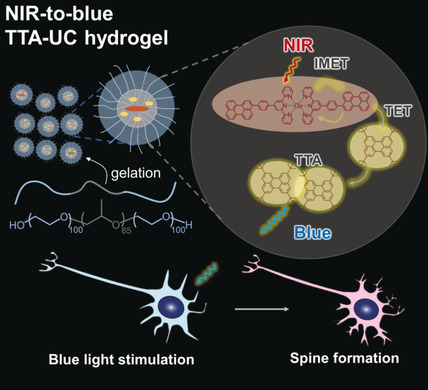
Near-infrared (NIR) light-triggered optogenetics with triplet–triplet annihilation-based photon upconversion (TTA-UC) is demonstrated. Triplet-lifetime extension by the covalent conjugation of donor and acceptor and a heat-induced conformational change of the hydrogel that prevents oxygen diffusion enables the formation of dendritic-spine-like structures by hippocampal neurons, induced by NIR-to-blue TTA-UC.
Perovskites
A-site Cation Engineering for Highly Efficient MAPbI3 Single-Crystal X-ray Detector
- Pages: 17834-17842
- First Published: 23 September 2019
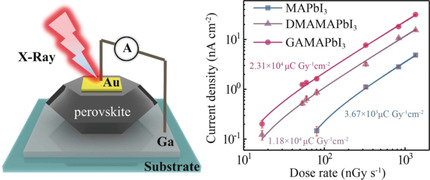
Detective work: DFT simulations and experimental results suggest that an alloyed large cation at the “A-site” can improve the performance of MAPbI3 (MA=CH3NH3) single-crystal (SCs) based X-ray detectors. Thus, alloyed GAMAPbI3 SCs (GA=guanidinium) are prepared and found to be one of the best-performing perovskite X-ray detectors.
Metal–Organic Frameworks | Hot Paper
Long-Term Photostability in Terephthalate Metal–Organic Frameworks
- Pages: 17843-17848
- First Published: 04 October 2019
MXenes
Tuning the Electrochemical Performance of Titanium Carbide MXene by Controllable In Situ Anodic Oxidation
- Pages: 17849-17855
- First Published: 01 October 2019
Organocatalysis
Umpolung Strategy for α-Functionalization of Aldehydes for the Addition of Thiols and other Nucleophiles
- Pages: 17856-17862
- First Published: 09 October 2019
Ionic Liquids
Hydrogen Bonding Between Ions of Like Charge in Ionic Liquids Characterized by NMR Deuteron Quadrupole Coupling Constants—Comparison with Salt Bridges and Molecular Systems
- Pages: 17863-17871
- First Published: 06 October 2019
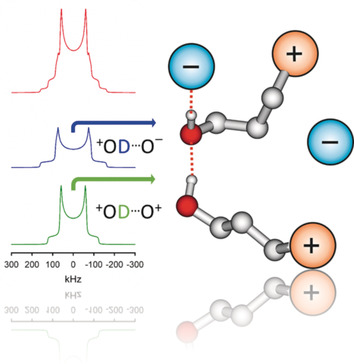
Probes for like-charge attraction: Solid-state NMR spectroscopy discriminates hydrogen bonding in conventional ion pairs from that between ions of like charge in ionic liquids. The measured deuteron quadrupole coupling constants for both types of ‘doubly ionic hydrogen bonds’ differ significantly. The observed cationic clusters prevent ionic liquids from crystallizing and result in supercooling and glass formation.




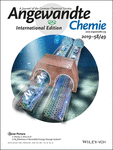


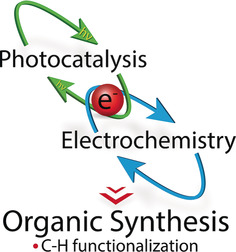

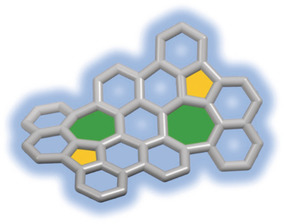

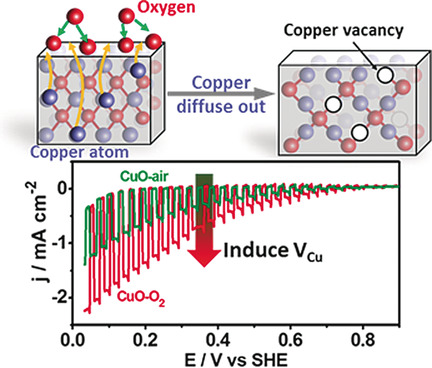
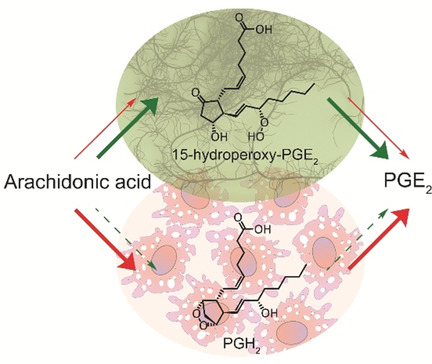

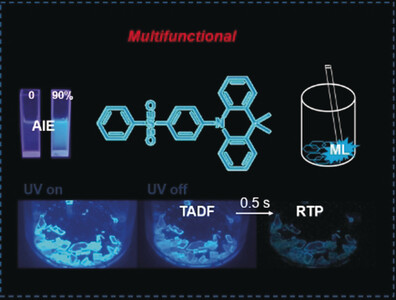

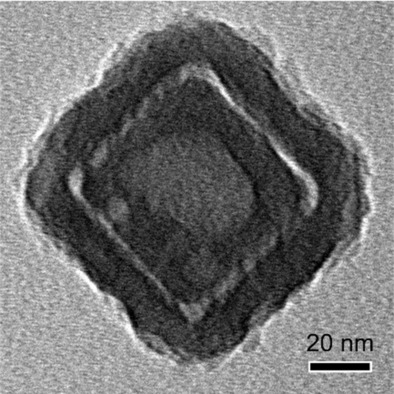
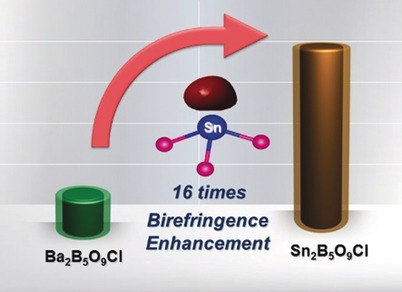

![Stabilization of Classical [B2H5]−: Structure and Bonding of [(Cp*Ta)2(B2H5)(μ-H)L2] (Cp*=η5-C5Me5; L=SCH2S)](/cms/asset/32c3332c-6149-41a9-8bfe-84c835ab74b4/anie201911480-toc-0001-m.jpg)






